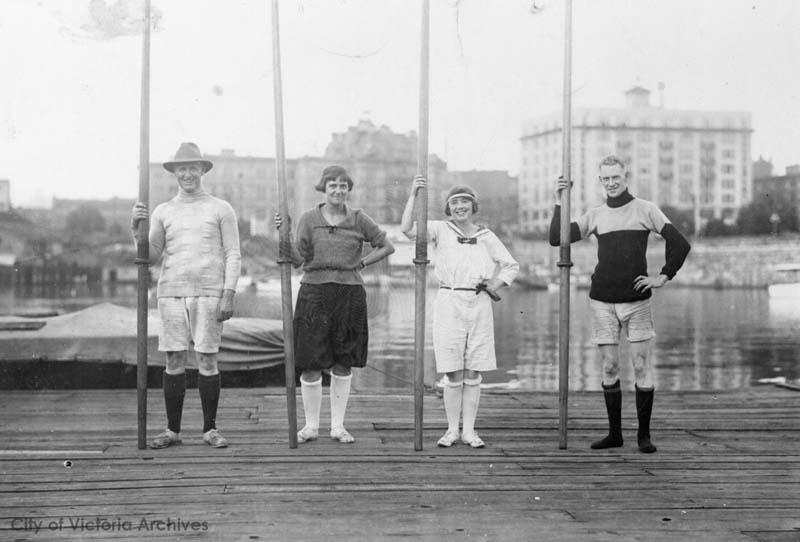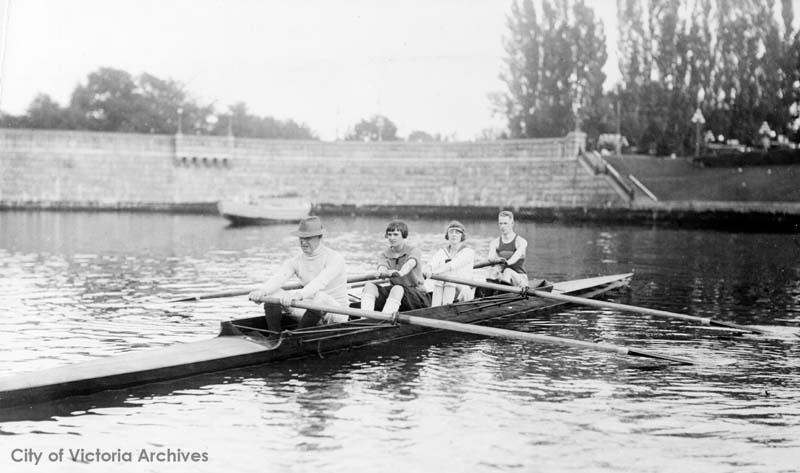Club History

Image M00701 courtesy of City of Victoria Archives
Rowing on the Gorge
People have been using the Gorge Waterway for commerce, ceremony, sport, and recreation for thousands of years. Halkett (Deadman's) Island, just in front of our club, belongs to the Songhees Nation and is an ancient burial site.
Rowing, as our club practices it today, became established in Victoria during the 1800s.
Many of the settlers who flooded into Victoria at the time, as well as officers at the Royal Navy Base in Esquimalt, were Englishmen familiar with British rowing tradition. Races on the Gorge and the Inner Harbour attracted hundreds of spectators. These rowing events were as much social gatherings as sporting events in the 1800s.

Image M00691 courtesy of City of Victoria Archives.
Our club's roots started in 1996 with the Go Rowing & Paddling Association of Canada. Under the umbrella of GO, our site offered paddling, rowing, and fitness opportunities for Greater Victoria.
Around 2014, GO transferred the community rowing program to St. Michaels University School. At the same time, Fairway Gorge Paddling Club was formed to take over the paddling and gym facilities (the gym now operates independently as Selkirk Waterfront Fitness).
In 2017, the Gorge Narrows Rowing Club became independent from SMUS and has been running community rowing programs ever since. Both GNRC and SMUS run rowing programs out of the boathouse.
